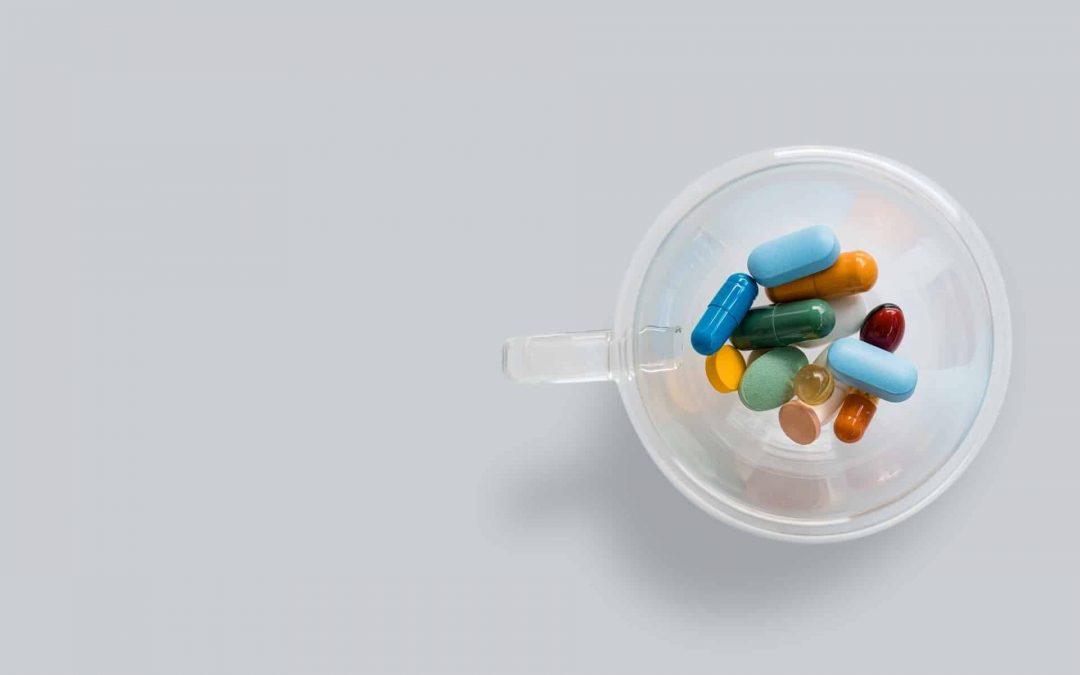The immune system is a complex but fascinating process that has only recently been understood to any degree. The immune system protects the body from invaders like bacteria or viruses by identifying and attacking them with white blood cells.
There are many different types of white blood cells, and they all have different functions that contribute to the success of this defense mechanism. This blog post will cover some basics about how the immune system works, as well as introduce you to some common white blood cells in order to give you a better understanding of this amazing biological process!
Contents
The immune system:
The immune response is initiated when a white blood cell identifies an invader like bacteria or virus and then attacks it with chemicals. These defenses are produced by the lymphatic system, which produces B-cells that produce antibodies to fight off invaders. There are also T-cells, which can identify antigens from cells on their own in order to defend against things that our body doesn’t want (like cancer).
There are many different types of white blood cells; some work as scavengers who eat up anything they find like neutrophils and monocytes. Others have specific functions such as macrophages whose job is mainly fighting infections by engulfing pathogens into themselves until their burst, there’s no way for the pathogen to be then released.
White blood cells
Immune cells that are created in the bone marrow, mature to fight infection.
White blood cells are classified by what type of antigen they react with. There is a lot of genetic diversity in the immune system, but all white blood cells can identify one or more antigens on their own so there’s no need for them to wait around for antibodies from other white blood cells that have already encountered the same invader before and produced an antibody.
They have a variety of functions and different types with specialized tasks including phagocytes like macrophages which engulf invaders directly or through chemical signals. Neutrophils move quickly and attack bacteria, fungi, parasites and viruses; B cells produce antibodies against specific infections; T cells battle intracellular pathogens
The most common types include: B-cells which respond to cell fragments called peptides; T-cells which respond to protein molecules known as MHCs; NK cells (natural killer) which recognize diseased body tissue such as tumor tissues; neutrophils which attack bacteria and provide protection against fungi and protozoa like malaria parasites; monocytes which produce antibodies for the rest of your white blood cells; and eosinophils that attack worms.
The immune response:
Immune response is divided into two categories: innate immunity and adaptive immunity.
Innate immunity includes physical barriers created as skin/mucous membranes such as sweat & tears; chemicals secreted from glands within the body such as stomach acid; osmotic pressure on surfaces of organs lining cavities (like bladder); natural antibodies produced during pregnancy; phagocytic activity toward microbes inside tissues – all these factors work to keep microbes from entering the body.
Related articles:
Herbs for immune system boost: all you need to know.
Adaptive immunity:
Adaptive immunity is divided into two categories: humoral and cell-mediated, both of which involve antibodies or white blood cells (complement) that are produced by immune system cells in response to a specific invader for permanent protection against further invaders of that same type but not other types. The word “humoral” comes from an old medical term meaning fluid – it’s referring to antibody production by B lymphocytes after antigen molecules bind with their receptors on these cells’ surfaces. Cell mediated refers to T lymphocytes activated by antigens binding with corresponding receptors on surface membranes; they produce cytokines & kill infected host tissues such as virus producing organ like liver, lung etc.
The immune response is a complex process involving many different parts of the body.
It begins with something called antigen-presenting cells (APCs) which are sent out by other types of white blood cells to find foreign invaders like bacteria, viruses, parasites, or fungi in tissues such as skin, sinuses, or lungs. They then use their own MHCs to present antigens from these pathogens on their surface so they can be recognized by T-cells or B-cells.
When this happens it triggers an inflammatory reaction where fluid leaks into nearby tissue and causes swelling while providing more nutrients and oxygen for immune system cells fighting the infection.
Immune system cells also rely on a process called clonal selection when they identify foreign invaders in the body and decide how to attack them, meaning that there are many different types of immune response cells all fighting the same antigen or pathogen but with slightly different methods for doing so.
This is an important distinction because it means we can use vaccines as preventative measures against future infections by exposing people to weakened forms of viruses which will train their immune systems without any risk for illness.
There’s still much more work being done before scientists understand exactly what makes up this complex defense network and why some things go wrong like autoimmune disorders where T-cells mistakenly attack healthy tissue instead of just pathogens, but researchers have already made progress towards unraveling its mysteries.
Antigens:
Molecules inside bacteria such as lipopolysaccharide (LPS) on their surface called endotoxins that trigger immune response. LPS is toxic but it’s also an important way for white blood cells to detect when there’s been an invasion because they bind tightly to them so this triggers inflammation, a crucial part of the immune response
White blood cells have many specialized functions and different types with specialized tasks including phagocytes like macrophages which engulf invaders directly or through chemical signals. Neutrophils move quickly and attack bacteria, fungi, parasites and viruses; B cells produce antibodies against specific infections; T cells battle intracellular pathogens
The immune system is a complex network of organs that work together to defend the body from infectious disease by detecting them as soon as they enter. Immune responses are coordinated between white blood cells in tissues outside of lymph nodes where they spill over into the bloodstream when an infection is detected, then back to these tissues where other immune cells have been waiting for The process starts immediately at this point called inflammation Once there’s enough antigen around to trigger it off, which can happen quite suddenly, the immune response is further amplified by B cells and T cells.
In general terms this means that white blood cells called phagocytes move quickly and attack bacteria, fungi, parasites and viruses; while other types of white blood cells produce antibodies against specific infections when triggered to do so by their antigen receptors on these cell surfaces (these are special proteins or glycoproteins which bind to antigens). The next stage in this process is for helper T-cells to activate yet more different kinds of responding white blood cells like killer lymphocytes or natural killer (NK) cells, as well as inflammatory cytokines such as interleukin-12 (IL-12), tumor necrosis factor alpha(TNFα), gamma interferon (IFNγ), and interferons.
Additional immune cells produced at this stage are called “B” or immunoglobulin-secreting plasma cells, which produce antibodies to fight off infections; these can be active in the blood stream as well as in bodily secretions like saliva, tears, milk etc.
Antigens that trigger a response from B lymphocytes include proteins found on bacteria such as lipopolysaccharide (LPS) and protein fragments of parasite eggs such as chitin. Antibodies will bind specifically with antigens if they have a similar shape: for example HBsAg binds to anti-HBs antibodies because the two share an identical Y shaped structure
Immune cells can also recognize chemicals, called haptens. The immune system is more likely to respond if a foreign substance such as microbial or chemical has been absorbed by an epithelial cell and then reaches the blood stream.
What can weaken the immune system?
- Stressful events can lower the immune system’s ability to respond effectively.
- If we are not getting enough sleep, our immune systems function less efficiently.
- Junk food can worsen an existing condition or create a new one.
- Infections caused by the common cold can impair our immune system’s ability to fight off other infections because it is focusing its energy on fighting that infection and not others.
What foods and supplements that boost the immune system?
Foods such as turmeric, ginger and garlic may help to boost the immune system. It’s best to eat them raw or cook with a little oil rather than in butter.
Immune boosting supplements are also available from health food stores and pharmacies for those who don’t like getting their nutrients from food sources.
Vitamin C is an example of one compound that boosts immunity through its antioxidant properties which can lessen inflammation caused by stress hormones, reduce oxidative damage seen during aging and protect cells against DNA mutations caused by carcinogens, all of these factors contribute to reducing the risk of cancer.
Ascorbic acid (vitamin c) acts both inside cells where it helps regenerate other antioxidants including vitamins E & A, glutathione per oxidase, and superoxide dismutase. It also helps manufacture collagen which is important for healthy skin, muscles & joints.
It’s best to avoid stressing your immune system by overeating, eating junk food or too much dairy because these foods can leave you feeling lethargic as the body tries to digest them.
Exercise boosts immunity in several ways: it reduces blood pressure which lowers stress on the cardiovascular system; it increases endorphins (hormones that reduce pain) so we feel less stressed out while increasing alertness; and exercise alters white blood cells’ response to invaders, they become more active against infections and release a compound called interleukin-12 (IL 12), an immunoactive cell (cell that help the immune system).
Stem cells are important because they can replace damaged or diseased cells in a process called cell regeneration.
The white blood cells, which form part of our immune system, work to fight diseases and infections by identifying pathogens (foreign invaders) like bacteria and viruses.
How does exercise benefit the Immune System?
Exercise stimulates and strengthens your body’s defense mechanisms (immune responses).
Exercise alters white blood cells’ response to invaders – they become more active against infections and release a compound called interleukin-12 (IL 12), an immunoactive cell (cell that helps with immunity) that regulates other white blood cells in order to provide better protection from invading contaminants.
This is one of many reasons why maintaining a healthy lifestyle can help you maintain good health! And also keep your immune system strong!
Related articles:
How to build your immune system to fight HPV
Everything You Ever Wanted to Know About Flu Immunity











0 Comments